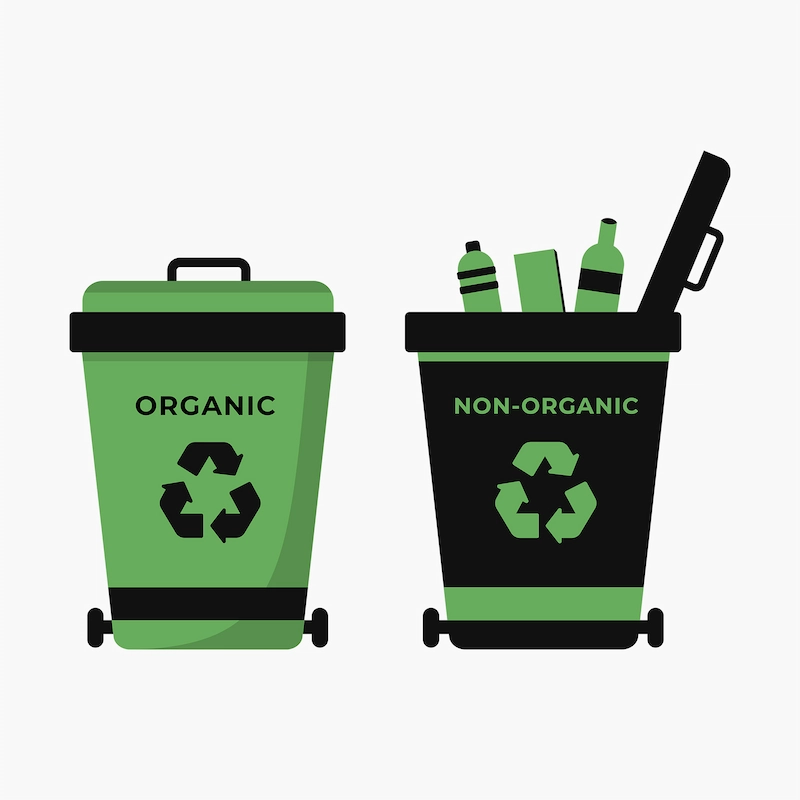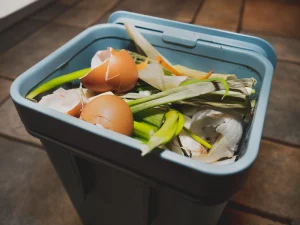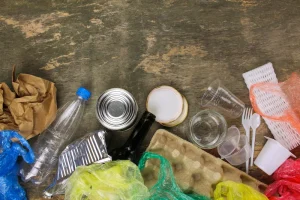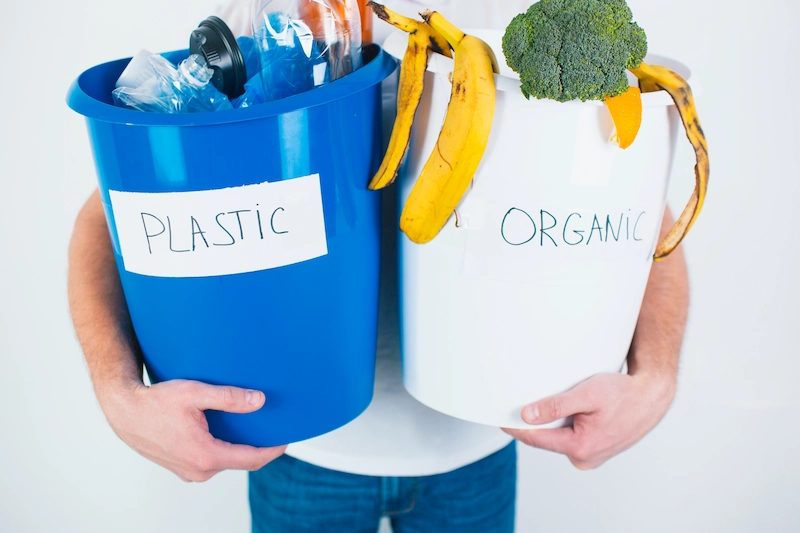Table of Contents
Waste is an everyday problem in our life. However, did you know that not all waste is the same? We often encounter two types of waste, namely organic and inorganic waste.
Although both end up in the trash, each has different properties, management methods, and impacts on the environment. In this case, humans play an important role in environmental conservation efforts, including managing waste properly.
By sorting organic and inorganic waste, you can reduce the negative impact on the earth.
Therefore, this article will discuss more about organic vs. inorganic waste, as well as how to properly manage them in order to minimize their impact on the environment. Check out the full explanation below!
Organic Waste vs. Inorganic Waste
Did you know our planet is already home to around 2.01 billion tons of household solid waste yearly? According to the World Bank, this figure is expected to reach 3.40 billion in about 30 years with a percentage increase of 70%.
A fantastic number, right? Of course, we cannot consider this as an achievement. This rapid increase in waste production represents a serious threat to our environment.
Every year humankind produces a pile of waste equivalent to several mountains. Hence, it’s imperative to start reducing waste to keep a clean and healthy environment.
As a first step, Warga Asri can start by separating organic and inorganic waste. Unfortunately, many people still don’t know the difference between the two.
But don’t worry! In this article, you will learn about the difference between inorganic and organic waste. Check out the full explanation below.

1. Source of Waste
The first difference lies in its source. What is organic waste? Organic waste comes from the remains of food, plants, or animals that can decompose.
On the other hand, inorganic waste comes from synthetic materials or human-made products that take longer than usual to decompose.
2. Waste Content
Organic waste is rich in carbon and hydrogen compounds; hence, it can form complex, easily decomposed molecules. It contrasts inorganic waste; waste generally consists of pure minerals or simple mineral compounds.
Read also: How to Recycle Organic Waste: Try These 4 Easy Craft Ideas!
3. Resistance to Heat
Organic and inorganic waste have different heat resistances. Organic waste includes natural materials, which makes it easily flammable or decomposed by fire.
On the other hand, inorganic waste, such as plastic or glass, is more resistant to heat, so it does not burn easily.
4. Reactions Produced
Organic waste has a slower reaction rate and does not produce salts. Meanwhile, inorganic waste often undergoes faster reactions and can form salt compounds.
5. Waste Management Methods
Organic waste can go through a process and be made into compost to fertilize plants or biogas for fuel.
In addition, organic waste can also go through decomposition by microorganisms, such as worms or certain insects. On the other hand, inorganic waste requires a particular recycling process based on its material.
6. Waste Decomposition Time
Organic waste takes about 1-6 months to decompose completely. For example, a banana peel takes about 1 month to decompose, while an orange peel takes about 6 months.
As for inorganic waste, it takes a much longer time to decompose in nature. For example, used food cans can decompose within 50-200 years.
If you throw away inorganic waste carelessly, it will have a prolonged negative impact on the earth.
Read also: How to Get Rid of Trash: Proper Ways You Should Know!
Examples of Organic and Inorganic Waste
After understanding the difference between organic and inorganic waste, let’s look at the examples we often encounter daily. Check out the list below:
Examples of organic waste:
- From the kitchen: Food scraps (rice, vegetables, fruits), fruit and vegetable peels, tea, coffee, eggs, and fish bones.
- From the garden: Dried leaves, grass, twigs, flowers.
- From animals: Pet waste.

Examples of inorganic waste:
- Plastic: Plastic bottles, plastic bags, straws, food packaging.
- Paper: Newspapers, magazines, books, cartons.
- Glass: Glass bottles, window glass, mirrors.
- Metal: Beverage cans, aluminum foil, nails.
- Electronics: Batteries, used cell phones, computers.
- Others: Styrofoam, disposable baby diapers.

Read also: What Is Organic Waste? Find Out the Types and Benefits!
How to Dispose of Organic and Inorganic Waste
Now that we’ve learned the differences and examples of organic and inorganic waste, let’s learn how to dispose of or manage them to keep the environment clean and healthy! Check out the processing procedures of organic and inorganic waste below:
1. Separating the Source
Separating waste from the very beginning is the key to good waste management. By separating organic and inorganic waste, you can facilitate further processing and reduce the negative impact on the environment.
The process is quite simple. You only need to provide separate containers for organic and inorganic waste.
Put organic waste, such as food scraps or leaves, in the organic container, while inorganic waste, such as plastic or paper, goes in their respective places.
2. Composting Organic Waste
Organic waste can be turned into compost by going through composting. You can use a composter to decompose food scraps, leaves, and other organic materials into natural fertilizer.
Place the composter in a place that gets enough heat and moisture so that the decomposition process takes place faster.
3. Recycling Inorganic Waste
Separate and collect recyclable inorganic waste, such as paper, cardboard, or metal, for recycling.
Follow the recycling guidelines in your area to protect the environment. By sorting your inorganic waste, you are helping to reduce the use of new natural resources.
4. Destructing Hazardous Waste
Hazardous inorganic waste, such as batteries, used electronics, or chemical products, needs to be handled with care according to applicable regulations. Avoid throwing it into the regular trash, as it can harm the environment and your health.
5. Proper Segregation
Use appropriate and clearly labeled bins to separate organic and inorganic waste. This makes it easier for you, your family, or coworkers to dispose of waste appropriately.
That’s the difference between organic and inorganic waste that Warga Asri must know. By understanding this difference, you can wisely sort and manage waste, thereby contributing to reducing negative impacts on the earth.
You can start with small things, such as separating organic and inorganic waste at home. That way, together we can create a cleaner and healthier environment to support a more beautiful and environmentally friendly future.
If you want to know more about practical and effective ways to manage waste, listen to the exciting podcast Asritalks episode 1 on YouTube and Spotify.
There, you will get a lot of interesting tips, inspiring stories, and guidance on simple steps to sort waste that you can immediately apply at home.
So, are you ready to join Indonesia Asri? Let’s register now and become the FRONT LINE of Indonesia Asri. Turn your steps into a real example and start a change for a better earth.
Let’s realize a cleaner, greener, and more environmentally friendly Indonesia for future generations!
Read also: What Is Inorganic Waste? Learn Its Types and Examples Here!








